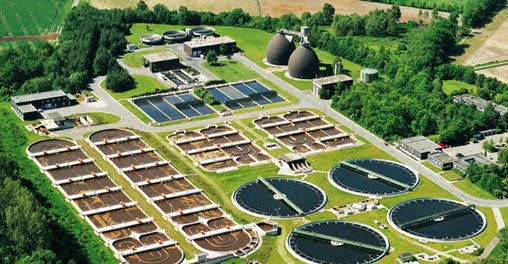As you
can tell from the title, I've branched out and decided to hit a topic that is a
bit different than some of the others we’ve touched on. What I’m going to
discuss is why we handle human waste and animal manures so differently. This is
a fun topic with lots of nuances and unfortunately we won’t be able to hit on
all of them, but as this is a pretty common question, i.e., why don’t our animal farms just treat their manures like cities do, I think its work talking
about.
As you
are probably aware, town and cities use sewage treatment facilities to process
human wastes. The treatment process create a purified (at least to some level)
liquid fraction that is usually discharged to surface water and often times, a
solids rich portion that is land applied on farm fields. The approach on
livestock farms is very different, in this case the manure is stored and then
applied to crop ground as a fertilizer.
So let's cut to the chase, why is human waste treated and
discharged and animal manure stored and land applied? There are a few
differences and I’ll try to hit on them, but the big one is WATER
consumption! There are lots of things in both animal manure and human waste
that can impact water quality… nitrogen, phosphorus, potassium, solids, and
even pathogens…, but one big difference is how much water is used, and as a
result how much manure/waste is generated.
You’ll
often hear things like a farm of 10,000 finishing pigs will produce as much nitrogen
of phosphorus as a city of 46,000 people, but it only takes about 550 people to
use as much water as those 10,000 pigs! Why does this matter… well, it means
our animal manures are a lot more concentrated than human waste! This means it
doesn’t take as much to cause and environmental issues and that conventional
waste treatment systems used for human waste often won’t perform well when used
for animal waste. However, just as importantly the lower water use at swine
farms makes it much, much more feasible and economical to collect, store, and apply
it to our crop fields as a fertilizer.
Let’s
play with a few numbers on this to get some idea about the economics; with
swine manure it probably costs about $0.02 per gallon to land apply. My math
says that 10,000 pigs will make about 4.4 million gallons of manure per year,
meaning our manure application cost would be about $88,000, but this swine
manure contains about $200,000 worth of fertilizer value based on the nitrogen,
phosphorus, and potassium it contains, making our storage and land application approach
a very viable utilization strategy. So what about our human waste? Well in this
case since the manure is much more dilute our costs to land apply it are probably
a bit cheaper, let’s say $0.005 a gallon. In this case a city of only 550
people with generate the same about of water so it would cost $22,000 to land
apply, but it would only contains a little more than 1% of the nutrient
value of the swine manure, so it only
has a fertilizer value of around $2,500. So in this case this doesn’t seem like
a very good approach to managing our human waste since the cost to handle it is
more than the fertilizer value it would provide.
In large
part, this is the fundamental difference. The reason we store and land apply
our animal manures is because they are concentrated enough that often times
utilizing the manure as a fertilizer source is economical. In the case of human
wastes, this isn’t the case because of how much water we use. Several other
factors also play a role, but at the fundamental level, it really comes down to
water use and our ability to economically use it as a fertilizer.



Is there really any science here? Where is the heavy metal analysis?
ReplyDeleteEven without the heavy metals analysis you can already see the incentive for managing the two differently.
DeleteCertainly the issue is more complicated. For example many wastewater treatment plants separate solids and try to thicken them to a point where it is economic to land apply, at which point heavy metals become important.